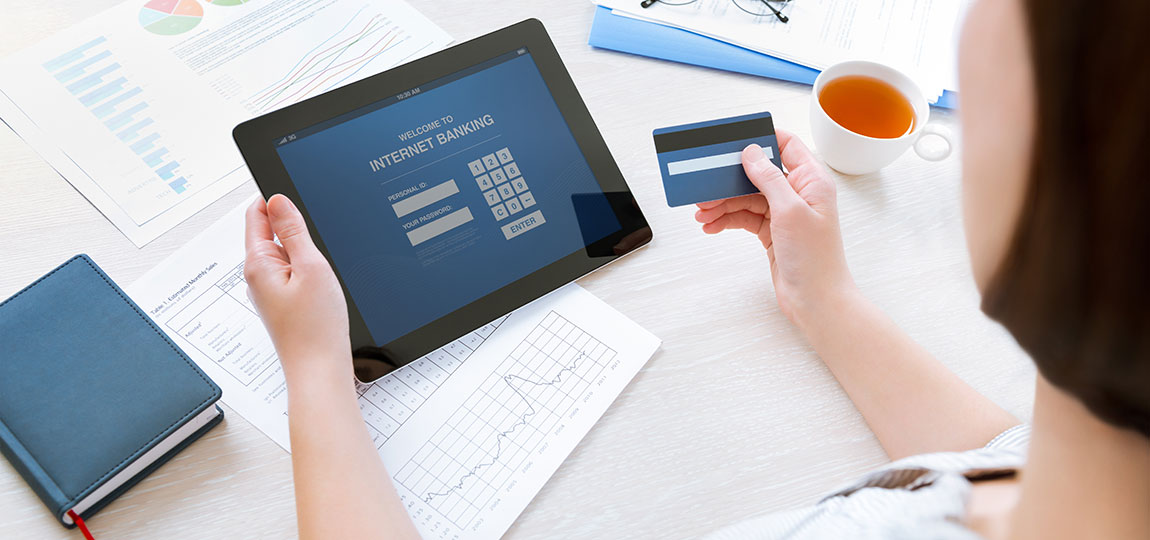The popularity of online and mobile banking continues to rise, largely due to its convenience and ease-of-use. And doing your banking online can be just as safe as banking at a brick-and-mortar bank, as long as you take the proper precautions.
Here are some general tips for helping to ensure a safe and secure online banking experience:
Ensure the bank is insured.
If you’re beginning a relationship with an online bank, it’s important to verify the bank’s insurance status. Check their website for an FDIC logo or the words “Member FDIC” or “FDIC Insured”.
The FDIC has an online database of FDIC-insured institutions at https://banks.data.fdic.gov/bankfind-suite/bankfind. You can use this database to determine if your online bank or a bank you’re interested in is covered under FDIC insurance. You can search for an institution by the bank’s name or address. A positive match will display the official name of the bank, the date it became insured, its insurance certificate number, the main office location for the bank, its primary government regulator, and other links to detailed information about the bank.
When using this tool though, be aware that some banks, like Bank5 Connect, operate under a “DBA” name (also known as a “doing business as” name). A DBA name will not work with the FDIC database tool, so you’ll need to search with the bank’s address instead.
Also keep in mind that not all online banks are insured by the FDIC. Many banks that are not FDIC-insured are chartered overseas. Check with your bank or the FDIC if you are uncertain whether your deposits are insured.
Bank5 Connect is FDIC insured, and also insured by the Depositors Insurance Fund (DIF). There is no dollar limit to the DIF’s insurance coverage; they cover everything above FDIC limits. What this means is that all Bank5 Connect deposits are insured in full. To learn more about Bank5 Connect’s DIF coverage, please visit us here.
Make sure the online banking website is secure.
Whenever you’re entering sensitive personal or financial information online, be sure to check to make sure the website is secure. First and foremost, you should ensure that the browser is showing “HTTPS” instead of “HTTP” on the page where you’re entering the sensitive information. HTTPS is the secure version of HTTP, the protocol over which data is transmitted between the browser and the website. The “S” at the end of HTTPS stands for “secure”. When you see the “HTTPS” (some browsers also display a small icon of a lock or a key next to the web address when you’re on a secure page), it means that all communication between your browser and the website are encrypted. Encryption is the process of scrambling private information to prevent unauthorized access.
And even if the bank’s website is secure, it doesn’t mean that sending an email to an address listed on the website is secure. You should never send sensitive information, such as account numbers or social security numbers, through unsecured e-mail.
Use a strong password or PIN.
When you’re deciding on a password or PIN (personal identification number) for online banking, be sure it is not a password or PIN that you use for other websites or accounts, and ensure it is strong. Never use something that’s easy to guess (no common words, names of loved ones, or birthdates), and use a mix of numbers, letters, and symbols for increased security. Passwords should also be changed regularly, and remember to never share your password or PIN with others.
Use a secure device and network.
Any time you’re doing banking activity online, make sure your computer or mobile device’s virus protection and other security software is up to date. It’s also important to never transmit sensitive information or conduct banking business over public Wi-Fi networks.
Check your bank accounts regularly.
Even if you follow all of the steps above, you should still get in the habit of monitoring your bank accounts on at least a weekly basis for any irregular or suspicious activity. If you do notice any strange transactions, be sure to notify your banking institution immediately.
